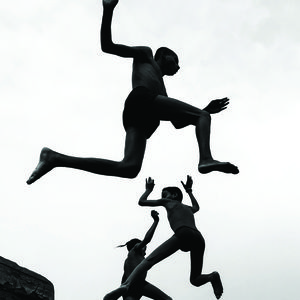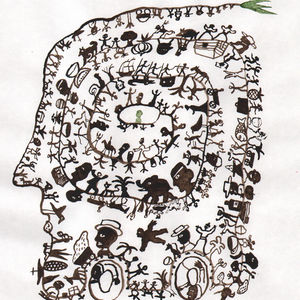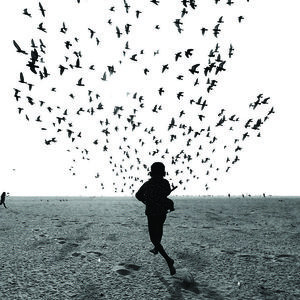- Doing Good
- Goodness Gracious
- Pain Relievers
- Call It Human Nature
- Storylines
- The Sickness Swing
- The Sound of Sublime
- Moving Pictures
- Body Language
- A Quiet Incarnation
- Giving Upward
- Dauntless Luminescence
- The Shining Joy of Falling Flat on Your Face
In a utility room under my basement stairs, imprudently close to our hot water heater, sit 10 cardboard boxes overflowing with pictures and other sentiment-rich family heirlooms. In days filled with emotions known only to those who have divvied up their parents’ earthly possessions, I reluctantly took custody of the makeshift family archive and carefully transported our Kodak-encapsulated memories across state lines in a car ride reminiscent of bringing my newborn home from the hospital.
When my sisters and I were kids, our family would have been described as being on the lower end of the middle class. We never lacked food or Catholic school tuition, but the station wagon’s window crank handle stayed broken for years and Mom never considered entering a grocery store without her tackle box full of coupons. Now I know at least part of why money was tight: judging by the number of pictures in my basement, it seems my parents may have been lottery winners with a photo addiction.
They took pictures of everything: baptisms and birthday parties, basketball games and ballet recitals. We have photographic evidence of the Rubik’s Cube Halloween costume Dad made for my sister and of the trip to Mississippi to visit Mom’s brother. Thousands of pictures resuscitate my memories of holidays, carnivals and weddings; thousands more fill in the years before I was born. My parents sure look young, and were they always smiling back then?
The answer to that question is, of course not. Many times a hidden camera would have captured more worry than laughter. I know, because now I’m a husband and father with a similar glut of photos. Our many photographs — just like my parents’ — barely whisper about life’s difficulties: sickness and death, loss and anxiety. Neither photo repository captures funerals or break-ups. There’s no evidence of missed free throws, broken promises or the trials of chemotherapy. The inoperable window crank handle didn’t make the cut, either.
But all that’s normal, I suppose. No one snaps family photos as a journalist trying to chronicle the action impartially. We take pictures because we want to seed smiles many years hence, when we will look back with happy memories. We consign to whomever may come after us a souvenir of the delight a moment held. We aspire to make that moment eternal, or at least to will it into a span of time that’s not quite as fleeting as all the others.
A subset of these family photos draws out more complicated feelings. These are the images of people unknown to me and my sisters: the great-uncles and great-aunts who came and went before our memories began; my grandparents’ classmates; former neighbors lost to the years.
My parents could have provided names and backstories. But now, even though each plays some role in our family tale, to us they are faces without identities, images without character. In truth, the same fate awaits the inhabitants of any picture after the passage of enough time. In a generation or three, photos of my parents will evoke only cloudy memories. Any photos of me will likely — surely? — encounter the same mental fog after a period so brief that it’s painful for my ego to admit.
So now I have to decide what to do with this mountain of pictures. I’ll probably digitize some, protecting them from the menaces of mold, moisture and mice. My sisters and I will look at them fondly though infrequently and will occasionally show them to our children who on their most generous days will be interested in and bored by them in equal measure.
The pictures themselves are not our treasure. They’re irreplaceable, but not of supreme importance. The memories are valuable, and they will provide solace and joy for decades to come. But like the photos themselves, they will eventually wash out to the sea of loss, like nearly everything else.
The real goodness is a life well lived: one that enjoys moments worthy of a photograph, bears nobly the seasons of burden, shares kindness and love across all sorts of boundaries and readies a person for eternity. That’s the sort of goodness that, I hope, mystically endures and is the metaphorical forest represented by each photographic tree.
One of the boxes under my stairs contains a small plaque with a poem Dad cherished, “Desiderata.” I’m struck by one of its final lines: “With all its sham, drudgery and broken dreams, it is still a beautiful world.”
It sure is. And it’s worthy of a few photos.
Chuck Lamphier is executive director for ecumenical and Church affairs in Notre Dame’s Office of Mission Engagement and Church Affairs.








